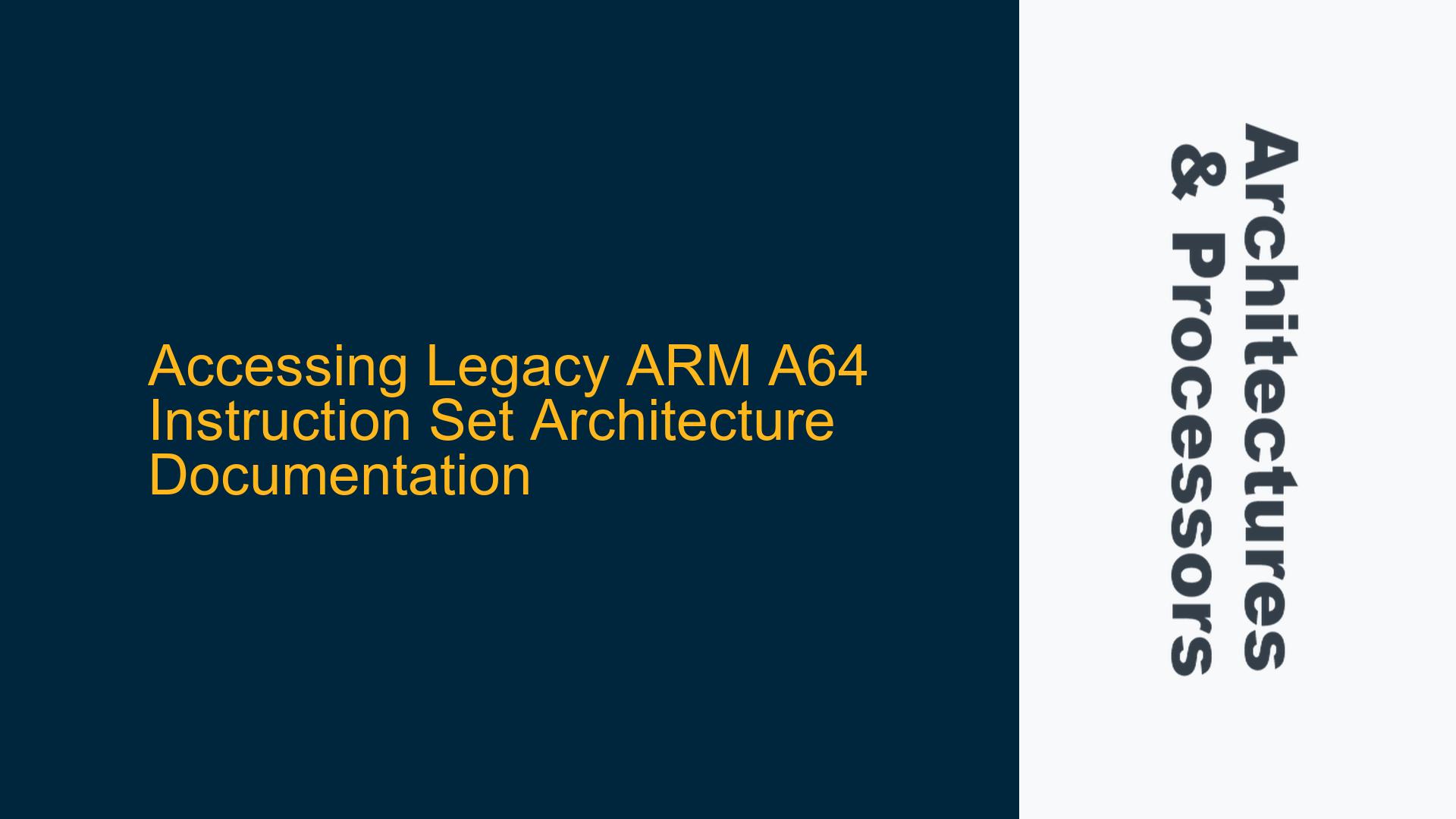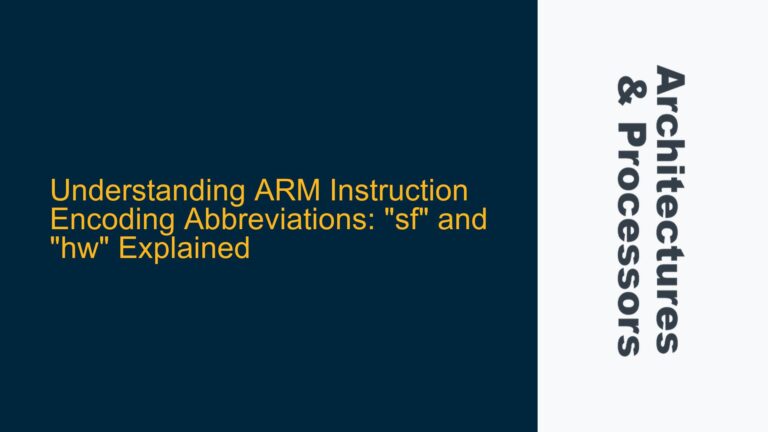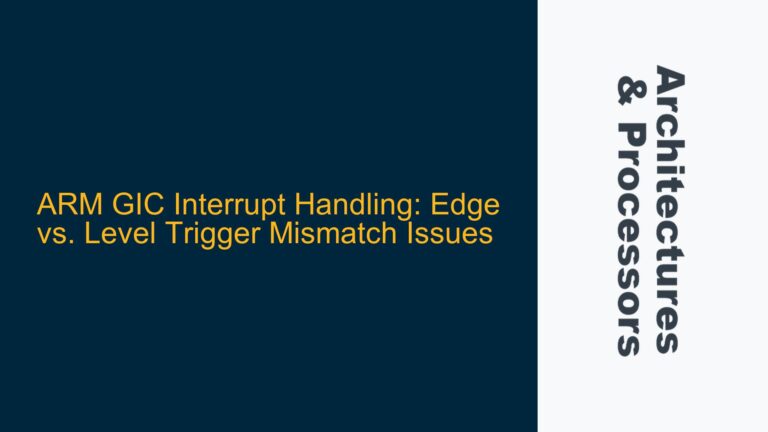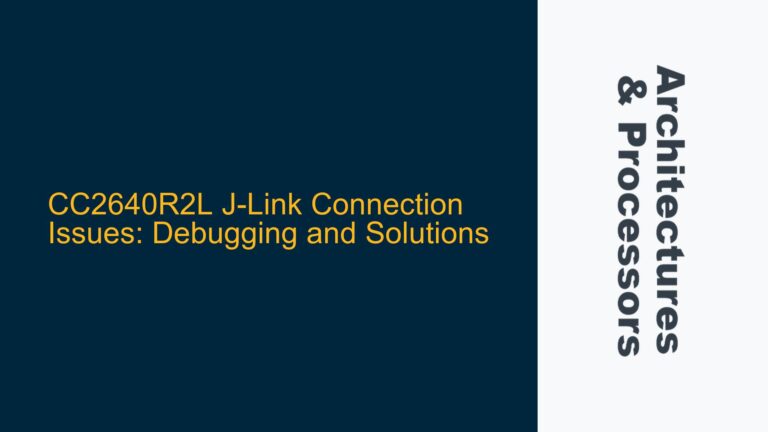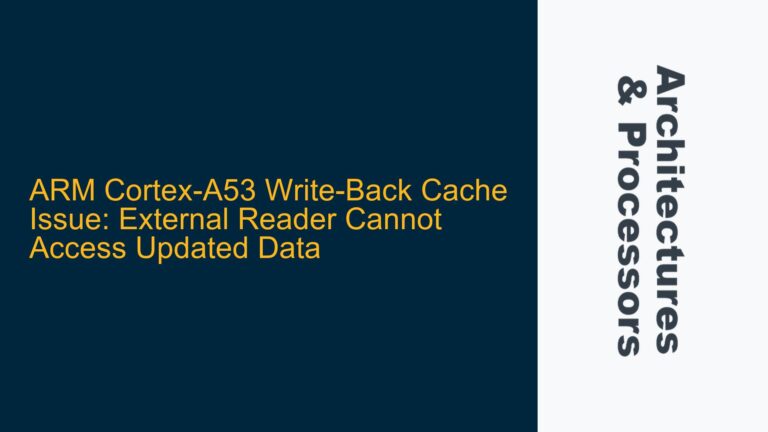ARM A64 ISA Versioning and Documentation Challenges
The ARM architecture, particularly the A64 instruction set used in ARMv8-A and later, is continuously evolving. ARM periodically releases updates to the Instruction Set Architecture (ISA) documentation to reflect new features, optimizations, and clarifications. While the latest versions of these documents are readily available on ARM’s official developer portal, accessing older versions, such as ARMv8.2, can be challenging. This is particularly problematic for developers working on legacy systems, maintaining older codebases, or conducting historical research on ARM architecture evolution.
The ARMv8.2 ISA introduced several significant features, including enhanced virtualization support, additional cryptographic extensions, and improvements to the Advanced SIMD (NEON) and floating-point instruction sets. These features are critical for developers working on systems that require compatibility with ARMv8.2 but do not need or cannot support newer ISA versions. However, ARM’s documentation strategy prioritizes the latest versions, often making older versions difficult to locate. This creates a gap for developers who need access to specific historical versions of the ISA documentation.
The challenge is compounded by the fact that ARM does not maintain a centralized archive of all historical ISA documentation versions. While the latest documentation is prominently featured on ARM’s developer portal, older versions are often removed or relocated without clear guidance on how to access them. This lack of accessibility can lead to inefficiencies, as developers may spend significant time searching for the correct documentation or, worse, rely on outdated or incorrect information.
Importance of Legacy Documentation for Compatibility and Debugging
Legacy ARM A64 ISA documentation is essential for several reasons. First, it ensures compatibility with older hardware and software systems. Many embedded systems, particularly in industries like automotive, aerospace, and industrial automation, have long lifecycles and may rely on ARMv8.2 or earlier architectures. Developers working on these systems need accurate documentation to ensure their code is optimized and functions correctly.
Second, legacy documentation is critical for debugging and troubleshooting. When issues arise in systems based on older ARM architectures, developers must refer to the specific ISA version that their hardware implements. Using the wrong version of the documentation can lead to misinterpretation of instruction behavior, incorrect assumptions about hardware capabilities, and ultimately, flawed debugging efforts.
Third, historical ISA documentation is valuable for educational and research purposes. Understanding the evolution of the ARM architecture provides insights into design decisions, performance optimizations, and the trade-offs made during the development of new features. Researchers and students often need access to older versions of the ISA documentation to study these aspects in detail.
Strategies for Locating and Utilizing Legacy ARM A64 Documentation
To address the challenges of accessing legacy ARM A64 ISA documentation, developers can employ several strategies. First, they should leverage ARM’s official developer portal and community forums. While the portal primarily features the latest documentation, it occasionally hosts older versions or provides links to archived resources. Community forums, such as the ARM Architecture and Processors Forum, are valuable resources where developers can request assistance from ARM employees and other community members.
Second, developers can utilize third-party archives and repositories that host historical versions of ARM documentation. These archives are often maintained by academic institutions, open-source communities, or individual enthusiasts. While these sources may not always be as reliable as ARM’s official documentation, they can provide access to older versions that are otherwise difficult to find.
Third, developers should consider reaching out to ARM directly through their support channels. ARM’s technical support team may be able to provide access to specific historical versions of the ISA documentation, particularly for customers with active support contracts. This approach is especially useful for organizations that require official documentation for compliance or certification purposes.
Finally, developers should maintain their own archives of ARM documentation. By downloading and storing relevant versions of the ISA documentation as they are released, developers can ensure they have access to the information they need, even if ARM removes or relocates the documents in the future. This proactive approach can save significant time and effort when working on legacy systems or conducting historical research.
Implementing a Documentation Management Strategy for ARM Development
To effectively manage ARM A64 ISA documentation, developers should implement a comprehensive documentation management strategy. This strategy should include the following components:
-
Version Tracking: Maintain a detailed record of the ARM A64 ISA documentation versions used in each project. This record should include the version number, release date, and any relevant notes about changes or updates.
-
Centralized Storage: Store all ARM documentation in a centralized, easily accessible location. This could be a shared network drive, a cloud storage service, or a version control system. Ensure that the storage solution is backed up regularly to prevent data loss.
-
Access Control: Implement access controls to ensure that only authorized personnel can view or modify the documentation. This is particularly important for organizations that handle sensitive or proprietary information.
-
Documentation Review: Periodically review the stored documentation to ensure it remains relevant and up-to-date. Remove outdated versions that are no longer needed and replace them with newer versions as they become available.
-
Training and Awareness: Educate team members about the importance of documentation management and provide training on how to access and use the stored documentation effectively.
By implementing these strategies, developers can ensure they have access to the ARM A64 ISA documentation they need, regardless of whether they are working on the latest or legacy systems. This approach not only improves efficiency and accuracy but also enhances the overall quality of ARM-based development projects.
